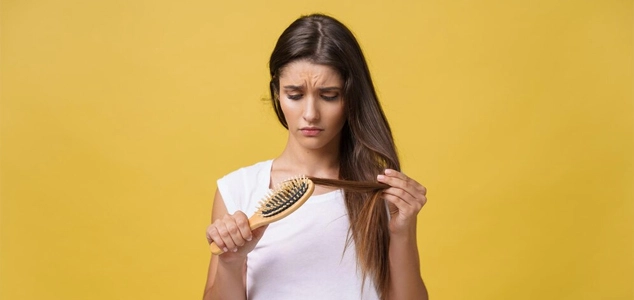Table of Contents
Hair loss, a condition that is traditionally associated with men, is also reported to significantly impact women, affecting not only their physical appearance but also their emotional well-being.
The difference between hair loss for women and men is that hair fall in women typically starts after their 40s, whereas it can start in men as early as their 20s. While it is very upsetting and embarrassing for both, it is reported to hurt the confidence of women much more.
In this article, we will cover the different aspects of women’s hair loss, from causes to treatment.
What is Hair Fall?
Hair fall, also known as hair loss or alopecia, refers to the gradual thinning or shedding of hair from the scalp or other parts of the body where hair grows. It’s a natural part of the hair growth cycle, with most people losing between 50 to 100 hairs per day.
However, when the rate of hair shedding exceeds the rate of hair regrowth, noticeable thinning or bald patches start to occur. Hair fall can significantly impact an individual’s self-esteem and confidence, leading to emotional distress and psychological effects.
Understanding the underlying causes of hair fall is crucial for implementing appropriate prevention and treatment strategies.
Types of Hair
When considering hair loss, your primary focus may be on the hair atop your head. This includes the lush strands you’ve cared for and styled over the years, as well as your eyebrows and eyelashes, which contribute to your facial definition.
The hair on your scalp, which tends to be longer, thicker, and more prominent, is referred to as capillary hair. Meanwhile, the finer peach fuzz that covers most of your skin, excluding areas like your palms, soles, lips, and eyelids, is known as vellus hair.
What Causes Hair Loss in Women?
Hair loss in women can cause due to multiple factors including:
- Genetic predispositions, such as androgenetic alopecia.
- Hormonal fluctuations, particularly during menopause or post-pregnancy.
- Stress.
- Lifestyle choices, including diet, hair care practices, and styling habits.
- Nutritional deficiencies, such as inadequate intake of vitamins and minerals essential for hair health.
- Underlying medical conditions like thyroid disorders, autoimmune diseases, and scalp infections.
Types of Baldness in Female
- Female Pattern Hair Loss: Hormonal imbalance can lead to androgenic alopecia. Anagen hair loss is rapid shedding caused by interruptions in the growth stage, often reversible post-chemotherapy. Telogen hair loss occurs when hairs prematurely enter the resting phase, usually temporary.
- Traction Alopecia: Hairstyles like tight ponytails or braids can cause follicular tension, resulting in hair loss, especially at the front of the scalp. Early intervention can allow hair regrowth, but persistent tension may lead to permanent damage and scarring.
- Cicatricial Alopecia: Also known as scarring alopecia, it’s characterized by small bald patches on the scalp due to hair follicles being replaced by scar tissue. Early diagnosis is crucial to prevent further irreversible hair loss.
Microneedling for Hair Loss
Microneedling, a minimally invasive procedure, can aid in treating hair loss in women by stimulating the scalp’s natural regenerative processes. Tiny needles create micro-injuries in the scalp, triggering the production of growth factors and promoting blood circulation to the hair follicles.
This process enhances nutrient delivery to the follicles, strengthens hair roots, and encourages the growth of thicker, healthier hair. Additionally, microneedling can also improve the absorption and effectiveness of topical treatments aimed at combating hair loss, making it a promising option for women seeking to rejuvenate their hair growth.
Conclusion
Microneedling is a new way that gives hope to women who have been losing hair. It helps in making hair grow back and feel healthier.
To get the professional microneedling treatment and learn more about it, schedule consultation with Dr Syra Hanif and book your appointment today!

-
About The Author
Dr. Syra Hanif M.D.Board Certified Primary Care Physician
Dr. Hanif is the Director of Aesthetic Medicine. She is a board-certified physician in Aesthetic Medicine who specializes in using non-surgical alternatives in order to enhance one's appearance through Botox and fillers.
Read More


